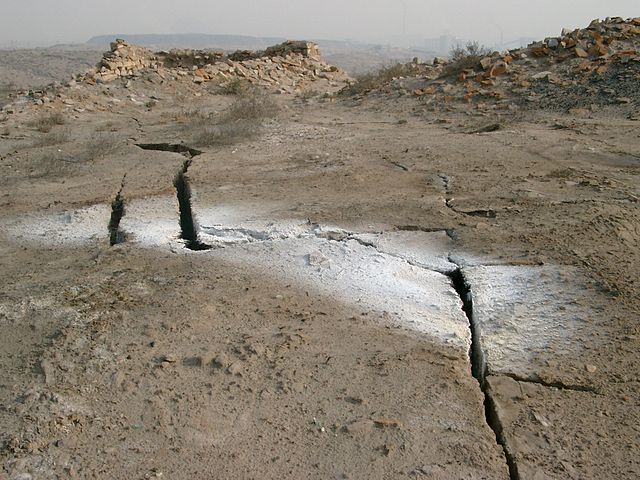A coal-seam fire is a burning of an outcrop or underground coal seam. Most coal-seam fires exhibit smouldering combustion, particularly underground coal-seam fires, because of limited atmospheric oxygen availability. Coal-seam fire instances on Earth date back several million years. Due to thermal insulation and the avoidance of rain/snow extinguishment by the crust, underground coal-seam fires are the most persistent fires on Earth and can burn for thousands of years, like Burning Mountain in Australia. Coal-seam fires can be ignited by self-heating of low-temperature oxidation, lightning, wildfires and even arson. Coal-seam fires have been slowly shaping the lithosphere and changing atmosphere, but this pace has become faster and more extensive in modern times, triggered by mining.
A coal fire in China
Open-cast mining continues near a fire at Jharia coalfield in India.
Fire at the surface, Xinjiang, 2002
The effect of underground coal fire visible on the surface
Smouldering or smoldering is the slow, flameless form of combustion, sustained by the heat evolved when oxygen directly attacks the surface of a condensed-phase fuel. Many solid materials can sustain a smouldering reaction, including coal, cellulose, wood, cotton, tobacco, cannabis, peat, plant litter, humus, synthetic foams, charring polymers including polyurethane foam and some types of dust. Common examples of smouldering phenomena are the initiation of residential fires on upholstered furniture by weak heat sources, and the persistent combustion of biomass behind the flaming front of wildfires.
Smouldering combustion in glowing embers of barbecue coal briquettes
A smouldering cigarette.
Polyurethane foam sample from the NASA smouldering experiments.
Smoke and pollution from fires in Borneo, 1997.








